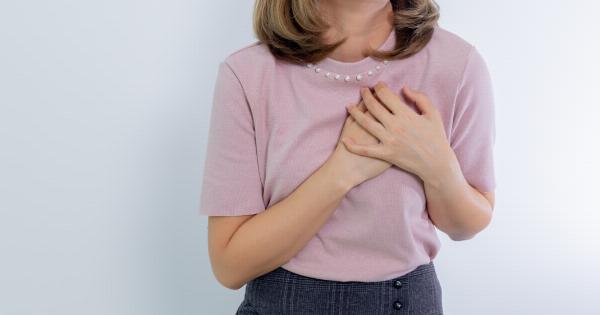Heart attack, also known as a myocardial infarction, is a serious medical condition that occurs when the blood flow to the heart muscle is blocked, usually by a blood clot. It is a leading cause of death worldwide, affecting both males and females.
However, research has shown that there are differences in the symptoms and presentation of heart attack between genders. Understanding these differences can help in quick and accurate diagnosis and potentially save lives.
1. Chest Discomfort
The classic symptom of a heart attack in both males and females is chest pain or discomfort. It is often described as a feeling of pressure, tightness, or squeezing sensation in the center of the chest.
However, the nature of this discomfort can differ between males and females.
In males, chest discomfort is typically more pronounced and intense. It may even radiate down the left arm or jaw. On the other hand, females may experience milder chest discomfort or a feeling of indigestion.
In some cases, females may not experience any chest pain at all, leading to a delayed diagnosis or misinterpretation of symptoms.
2. Shortness of Breath
Shortness of breath is a common symptom of a heart attack. Both males and females may experience difficulty in breathing or a sense of breathlessness. However, females are more likely to report shortness of breath than males.
This symptom may occur even without the presence of chest pain or discomfort.
3. Upper Body Pain
While both genders may experience pain or discomfort in the chest during a heart attack, females are more likely to feel pain in other areas of the upper body. This can include pain or discomfort in the neck, jaw, shoulders, or arms.
Males, on the other hand, may primarily feel the pain or discomfort in the chest and left arm.
4. Fatigue and Weakness
Unexplained fatigue and weakness are another set of symptoms that can be more common in female heart attack patients. Females may feel exhausted and tired even with minimal physical exertion.
This symptom is often misattributed to other causes, such as stress, poor sleep, or aging. Males may also experience fatigue and weakness, but it is not as frequently reported as in females.
5. Nausea and Vomiting
Nausea and vomiting can be associated with both male and female heart attack patients. However, females are more likely to experience these symptoms. Nausea may be accompanied by a feeling of lightheadedness or dizziness.
Vomiting may or may not be present, but it is more common in females compared to males.
6. Sweating
Excessive sweating, often described as breaking out into a cold sweat, can occur during a heart attack in both males and females. However, females tend to have more pronounced sweating or perspiration than their male counterparts.
This can be a persistent symptom and may not be relieved by typical remedies for sweating, such as using a fan or air conditioning.
7. Stomach Pain
Unexplained stomach pain or abdominal discomfort can be experienced by both males and females during a heart attack. However, females are more likely to report this symptom than males. The pain may feel like indigestion, heartburn, or a stomach ache.
It is important not to dismiss this symptom as merely gastrointestinal in nature, especially in females.
8. Back Pain
Back pain can occur as a symptom of a heart attack in both genders. However, females are more likely to experience pain in the upper back, while males may feel the pain more in the lower back.
This can sometimes be mistaken for muscle soreness or strain, leading to delayed diagnosis and treatment.
9. Anxiety
Feelings of anxiety, restlessness, or a sense of impending doom can be present in both male and female heart attack patients. However, females are more likely to report these emotional symptoms.
Anxiety may also be accompanied by other symptoms such as shortness of breath or chest discomfort.
10. Differing Presentation and Delayed Diagnosis
The differing symptoms of heart attack in males and females can sometimes lead to delayed diagnosis or misdiagnosis, particularly in females.
These differences often result in females being less likely to recognize or attribute their symptoms to a heart attack. As a result, they may delay seeking medical attention or receive treatment for a different condition that shares similar symptoms.
Conclusion
While the symptoms of heart attack in males and females overlap, there are distinct differences that healthcare professionals and individuals should be aware of.
Females may present atypically with milder chest discomfort, shortness of breath, upper body pain, fatigue, nausea, sweating, stomach pain, back pain, or anxiety. Recognizing these differences can enable prompt medical intervention and potentially save lives.




















